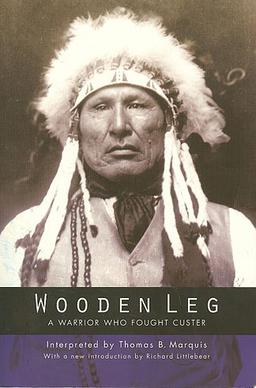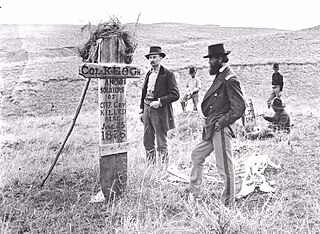Books
Scott, Douglas and Richard Fox, Jr. 1987 Archeological Insights into the Custer Battle: A Preliminary Assessment. Norman, University of Oklahoma Press.
Scott, Douglas D., Richard A. Fox, Jr., Melissa A. Connor, and Dick Harmon 1989 Archaeological Perspectives on the Battle of the Little Bighorn. Norman: University of Oklahoma Press.
Scott, Douglas D., P. Willey, and Melissa Connor 1998 They Died With Custer: The Soldiers’ Skeletons From The Battle of the Little Bighorn. University of Oklahoma Press, Norman.
Greene, Jerome A. and Douglas D. Scott 2004 Finding Sand Creek: History and Archeology of the 1864 Massacre. University of Oklahoma Press, Norman.
Scott, Douglas, Lawrence Babits, and Charles Haecker (editors) 2006 Fields of Conflict: Battlefield Archaeology from Imperial Rome to Korea, 2 Volumes. Praeger Security Press, Westport, CT.
Cruse, J. Brett with contributions by Martha Doty Freeman and Douglas D. Scott (contributor) 2005 Battles of the Red River War: Archaeological Perspectives on the Indian Campaign of 1874. Texas A&M University Press, College Station.
Scott, Douglas, Lawrence Babits, and Charles Haecker (editors) 2009 Fields of Conflict: Battlefield Archaeology from Imperial Rome to Korea. Potomac Books, Washington, DC (softcover edition).
Geier, Clarence R., Lawrence E. Babits, Douglas D. Scott, and David G. Orr (editors) 2010 Historical Archaeology of Military Sites: Method and Topics. Texas A&M Press, College Station.
Scott, Douglas D. 2013 Uncovering History: Archeological Investigations at the Little Bighorn Battlefield National Monument. University of Oklahoma Press, Norman.
Scott, Douglas D., Peter Bleed, and Stephen Damm 2013 Custer, Cody and the Grand Duke: Camp Alexis and the Royal Buffalo Hunt in Nebraska. University of Oklahoma Press, Norman.
Geier, Clarence R., Douglas D. Scott, and Lawence E. Babits (eds.) 2014 From These Honored Dead: Historical Archaeology of the American Civil War. University Press of Florida, Gainesville.
Book chapters
Scott, Douglas and Melissa Connor 1995 Post Mortem at the Little Bighorn. In Annual Editions: Archaeology 1995-1996, edited by Linda Hasten, pp 143–147, Dushkin Publishing, Gillford, Connecticut.
Scott, Douglas D. and Clyde Collins Snow 1996 Archeology and Forensic Anthropology of the Human Remains from the Reno Retreat Crossing. Reprinted in Images of the Recent Past, Readings in Historical Archaeology edited by Charles E. Orser, Jr., pp 355–367, Altimira Press, Walnut Creek, California.
Scott, Douglas D. 1996 Archaeological Perspectives on the Battle of the Little Bighorn: A Retrospective. In Legacy, New Perspectives on the Battle of the Little Bighorn, edited by Charles E. Rankin, pp 167–188, Montana Historical Society Press, Helena.
Scott, Douglas D. 1997 Interpreting Archaeology at Little Bighorn Battlefield National Monument. In Presenting Archaeology to the Public, Digging for Truths, edited by John H. Jameson, Jr., pp 234–242m, Altimira Press, Walnut Creek, California.
Scott, Douglas and P. Willey 1997 Little Bighorn: Human Remains from the Custer National Cemetery. In Remembrance: Archaeology and Death edited by David A. Poirier and Nicholas F. Bellantoni, pp 155–171. Bergin and Garvey, Westport, Connecticut.
Scott, Douglas D. 1998 Euro-American Archaeology. In Archaeology of the Great Plains, edited by W. Raymond Wood, pp. 481–510. University of Kansas Press, Lawrence.
Scott, Douglas D. and Melissa A. Connor 1999 Post-Mortem at the Little Bighorn. In Lessons from the Past: An Introductory Reader in Archaeology edited by Kenneth L. Feder, pp 123–129. Mayfield Publishing, Mountain View, CA.
Scott, Douglas D. 1999 Archaeologists: Battlefield Detectives. In Little Bighorn Remembered: The Untold Story of Custer's Last Stand edited by Herman J. Viola, pp 165–177, Times Books, New York.
Scott, Douglas D. and Melissa A. Connor 1999 Post-Mortem at the Little Bighorn. In The Great Plains: A Cross-Disciplinary Reader Department of English, Oklahoma State University, pp 290–299. Harcourt Brace Custom Publishers, Orlando, FL.
Scott, Douglas D., Peter Bleed, Andrew E. Masich, and Jason Pitsch 1999 An Inscribed Native American Battle Image from the Little Bighorn Battlefield. In The Great Plains: A Cross-Disciplinary Reader Department of English, Oklahoma State University, pp 300–318. Harcourt Brace Custom Publishers, Orlando, FL
Scott, Douglas D. and Peter Bleed 2002 Custer and the Grand Duke in Nebraska, 1872: Some Insights from New Photographic Evidence. In Custer and His Times, Book 4 edited by John P. Hart, pp 94–109. Little Bighorn Associates, La Grange, IL.
Scott, Douglas D. 2004 Men with Custer, The Dead Tell Their Tale. In G. A. Custer: His Life and Times, by Glenwood J. Swanson, pp 266–287. Swanson Productions, Agua Dulce, CA.
Scott, Douglas D. 2005 Interpreting Archeology at the Little Bighorn Battlefield National Monument. In Preserving Western History, edited by Andrew Gulliford, pp 20–31. University of New Mexico Press, Albuquerque.
Scott, Douglas D. 2005 The Archaeology of Battlefields. In The Archaeology of War, edited by Mark Rose, pp 257–259. Hatherleigh Press, New York.
Scott, Douglas and Lucien Haag 2006 “Listen to the Minié Balls”: Identifying Firearms in Battlefield Archaeology. In Fields of Conflict: Battlefield Archaeology from Imperial Rome to Korea, Volume I, edited by Douglas Scott, Lawrence Babits, and Charles Haecker, pp 102–120. Praeger Security Press, Westport, CT.
Scott, Douglas and Lucien Haag 2009 “Listen to the Minié Balls”: Identifying Firearms in Battlefield Archaeology. In Fields of Conflict: Battlefield Archaeology from Imperial Rome to KoreaI, edited by Douglas Scott, Lawrence Babits, and Charles Haecker, pp 102–120. Potomac Books, Washington, DC (softcover edition).
Scott, Douglas D. 2009 Studying the Archaeology of War: A Model Based on the Investigation of Frontier Military Sites in American Trans-Mississippi West. In International Handbook of Historical Archaeology, edited by Teresita Majewski and David Gaimster, Springer, NY, pp 299–318.
Scott, Douglas D. 2009 Battlefield Archaeology: Some New Insights into Custer’s Last Stand. In Schlachtfeldarchäologie, edited by Harald Meller, pp 253–257. Tagungen des Landesmuseums für Vorgeschichte, Halle.
Scott, Douglas D. 2010 Military Medicine in the Pre-Modern Era: Using Forensic Techniques in the Archaeological Investigation of Military Remains. In Historical Archaeology of Military Sites: Method and Topics, edited by Clarence R. Geier, Lawrence E. Babits, Douglas D. Scott, and David G. Orr, pp21–30. Texas A&M Press, College Station.
Scott, Douglas D. 2010 Tragedy of the Nez Perce War of 1877: An Archaeological Expression. In Historical Archaeology of Military Sites: Method and Topics, edited by Clarence R. Geier, Lawrence E. Babits, Douglas D. Scott, and David G. Orr, pp21–30. Texas A&M Press, College Station.
Scott, Douglas D. 2014 Civil War Archaeology in the Trans-Mississippi West. In From These Honored Dead: Historical Archaeology of the American Civil War, edited by Clarence R. Geier, Douglas D. Scott, and Lawrence E. Babits, pp. 7–25. University Press of Florida, Gainesville.
Scott, Douglas D., Steve J. Dasovich, and Thomas D. Thiessen 2014 Archaeology of the First Battle of Boonville, Missouri, June 17, 1861. In From These Honored Dead: Historical Archaeology of the American Civil War, edited by Clarence R. Geier, Douglas D. Scott, and Lawrence E. Babits, pp. 26–41. University Press of Florida, Gainesville.
Thiessen, Thomas D, Steve J. Dasovich, and Douglas D. Scott 2014 Massacre and Battle at Centralia, Missouri, September 27, 1864: Historical and Archaeological Perspectives. . In From These Honored Dead: Historical Archaeology of the American Civil War, edited by Clarence R. Geier, Douglas D. Scott, and Lawrence E. Babits, pp. 26–56. University Press of Florida, Gainesville.
Scott, Douglas D. 2014 Reassessing the Meaning of Artifact Patterning. In Battles and Massacres on the Southwestern Frontier: Historical and Archaeological Perspectives, edited by Ronald K. Wetherington and Frances Levine, pp 134–152, University of Oklahoma Press, Norman.











